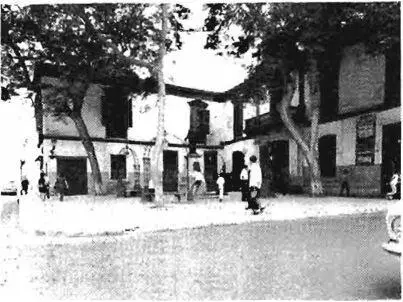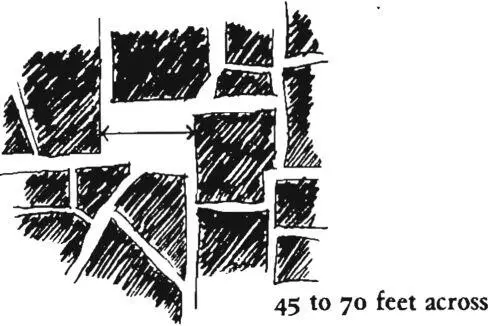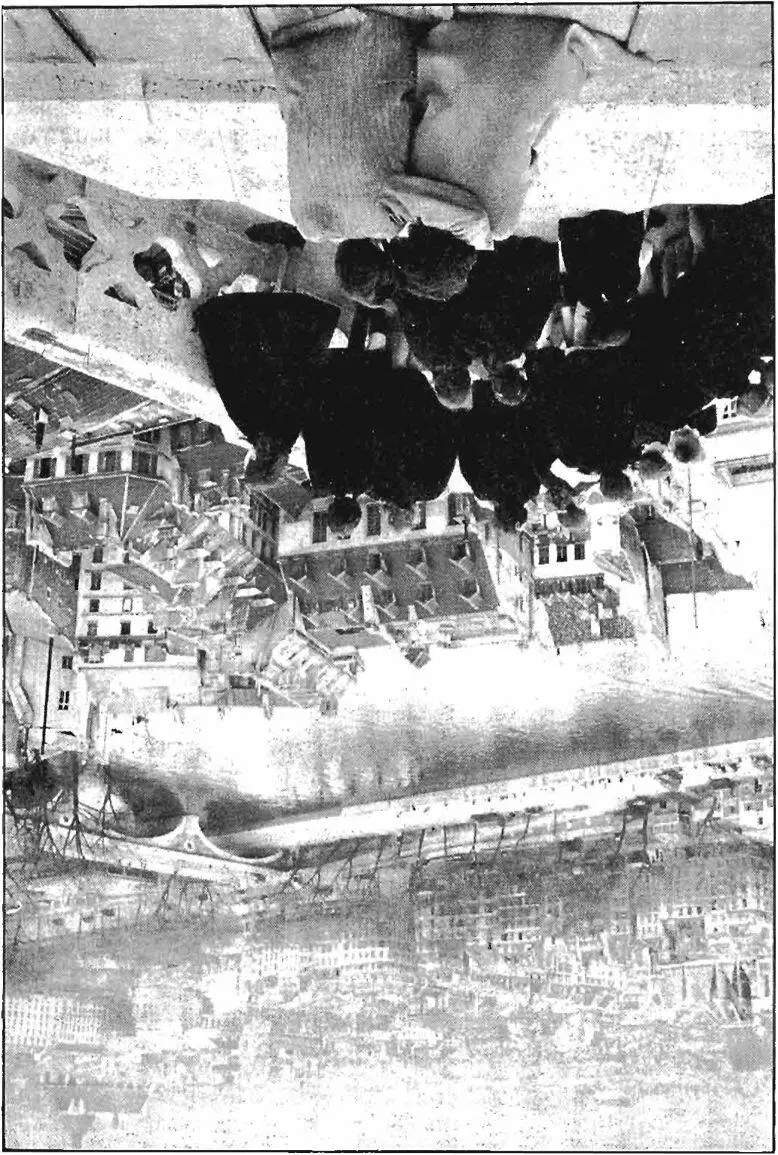Christopher alexander - A pattern language
Здесь есть возможность читать онлайн «Christopher alexander - A pattern language» весь текст электронной книги совершенно бесплатно (целиком полную версию без сокращений). В некоторых случаях можно слушать аудио, скачать через торрент в формате fb2 и присутствует краткое содержание. Жанр: Прочая научная литература, на английском языке. Описание произведения, (предисловие) а так же отзывы посетителей доступны на портале библиотеки ЛибКат.
- Название:A pattern language
- Автор:
- Жанр:
- Год:неизвестен
- ISBN:нет данных
- Рейтинг книги:3 / 5. Голосов: 1
-
Избранное:Добавить в избранное
- Отзывы:
-
Ваша оценка:
- 60
- 1
- 2
- 3
- 4
- 5
A pattern language: краткое содержание, описание и аннотация
Предлагаем к чтению аннотацию, описание, краткое содержание или предисловие (зависит от того, что написал сам автор книги «A pattern language»). Если вы не нашли необходимую информацию о книге — напишите в комментариях, мы постараемся отыскать её.
A pattern language — читать онлайн бесплатно полную книгу (весь текст) целиком
Ниже представлен текст книги, разбитый по страницам. Система сохранения места последней прочитанной страницы, позволяет с удобством читать онлайн бесплатно книгу «A pattern language», без необходимости каждый раз заново искать на чём Вы остановились. Поставьте закладку, и сможете в любой момент перейти на страницу, на которой закончили чтение.
Интервал:
Закладка:
A town needs public squares; they are the largest, most public rooms, that the town has. But when they are too large, they look and feel deserted.
It is natural that every public street will swell out at those important nodes where there is the most activity. And it is only these widened, swollen, public squares which can accommodate the public gatherings, small crowds, festivities, bonfires, carnivals, speeches, dancing, shouting, mourning, which must have their place in the life of the town.
But for some reason there is a temptation to make these public squares too large. Time and again in modern cities, architects and planners build plazas that are too large. They look good on drawings} but in real life they end up desolate and dead.
Our observations suggest strongly that open places intended as public squares should be very small. As a general rule, we have found that they work best when they have a diameter of about 60 feet—at this diameter people often go to them, they become favorite places, and people feel comfortable there. When the diameter gets above 70 feet, the squares begin to seem deserted and unpleasant. The only exceptions we know are places like the Piazza San Marco and Trafalgar Square, which are great town centers, teeming with people.
What possible functional basis is there for these observations? First, we know from the pattern, pedestrian density (123),
3ii
| TOWNS |
|---|
 |
 |
| The squares in Lima: one small and. alive , the other huge and deserted. |
that a place begins to seem deserted when it has more than about 300 square feet per person.
On this basis a square with a diameter of IOO feet will begin to seem deserted if there are less than 33 people in it. There are few places in a city where you can be sure there will always be 33 people. On the other hand, it only takes 4 people to give life to a square with a diameter of 35 feet, and only 12 to give life to a square with a diameter of 60 feet. Since there are far far better chances of 4 or 12 people being in a certain place than 33, the smaller squares will feel comfortable for a far greater percentage of the time.
The second possible basis for our observations depends on the diameter. A person’s face is just recognizable at about 70 feet; and under typical urban noise conditions, a loud voice can just barely be heard across 70 feet. This may mean that people feel half-consciously tied together in plazas that have diameters of
312 61 SMALL PUBLIC SQUARES
70 feet or less—where they can make out the faces and half-hear the talk of the people around them; and this feeling of being at one with a loosely knit square is lost in the larger spaces. Roughly similar things have been said by Philip Thiel (“An Architectural and Urban Space Sequence Notation.” unpublished ms., University of California, Department of Architecture, August i960, p. 5) and by Hans Blumenfeld (“Scale in Civic Design,” Town Planning Review, April 1953, pp. 35-46). For example, Blumenfeld gives the following figures: a person’s face can be recognized at up to 70 or 80 feet; a person’s face can be recognized as “a portrait,” in rich detail, at up to about 48 feet.
Our own informal experiments show the following results. Two people with normal vision can communicate comfortably up to 75 feet. They can talk with raised voice, and they can see the general outlines of the expression on one another’s faces. This 75 foot maximum is extremely reliable. Repeated experiments gave the same distance again and again, ±10 per cent. At 100 feet it is uncomfortable to talk, and facial expression is no longer clear. Anything above 100 feet is hopeless.
Therefore:
Make a public square much smaller than you would at first imagine; usually no more than 45 to 60 feet across, never more than 70 feet across. This applies only to its width in the short direction. In the long direction it can certainly be longer.

• «
♦ ♦
An even better estimate for the size of the square: make a guess about the number of people who will typically be there (say, P), and make the area of the square no greater than I 50 to 300P square feet—pedestrian density (123); ring the square around with pockets of activity where people congregate— activity pockets (124) ; build buildings round the square in such a way that they give it a definite shape, with views out into other larger places—positive outdoor space (106), hierarchy OF open SPACE (114), BUILDING FRONTS (l22), STAIR SEATS (125); and to make the center of the square as useful as the edges, build SOMETHING ROUGHLY IN THE MIDDLE ( I 26) . . . .
3 M
S i £
 |
| *S3DVTd HDIH Z() |
CHOOSING A LANGUAGE FOR YOUR SUBJECT
a porch onto the front of his house. This is the way the language, and its patterns, helped to generate this porch.
I started with private terrace on the street (140). That pattern calls for a terrace, slightly raised, connected to the house, and on the street side, sunny place (161) suggests that a special place on the sunny side of the yard should be intensified and made into a place by the use of a patio, balcony, outdoor room, etc. I used these two patterns to locate a raised platform on the south side of the house.
To make this platform into an outdoor room (163), I put it half under the existing roof overhang, and kept a mature pyracanthus tree right smack in the middle of the platform. The overhead foliage of the tree added to the roof-like enclosure of the space. I put a wind screen of fixed glass on the west side of the platform too, to give it even more enclosure.
I used six-foot balcony (167) to determine the size of the platform. But this pattern had to be used judiciously and not blindly—the reasoning for the pattern has to do with the minimum space required for people to sit comfortably and carry on a discussion around a small side-table. Since I wanted space for at least two of these conversation areas—one under the roof for very hot or rainy days, and one out under the sky for days when you wanted to be full in the sun, the balcony had to be made 12x12feet square.
Now paths and goals (I 20) ! Usually, this pattern deals with large paths in a neighborhood, and comes much earlier in a language. But I used it in a special way. It says that the paths which naturally get formed by people’s walking, on the land, should be preserved and intensified. Since the path to our front door cut right across the corner of the place where I had planned to put the platform, I cut the corner of the platform off.
The height of the platform above the ground was determined by ceiling height variety (190). By building the platform approximately one foot above the ground line, the ceiling height of the covered portion came out at between 6 and 7 feet—just right for a space as small as this. Since this height above the ground level is just about right for sitting, the pattern front door bench (242) was automatically satisfied.
Читать дальшеИнтервал:
Закладка:
Похожие книги на «A pattern language»
Представляем Вашему вниманию похожие книги на «A pattern language» списком для выбора. Мы отобрали схожую по названию и смыслу литературу в надежде предоставить читателям больше вариантов отыскать новые, интересные, ещё непрочитанные произведения.
Обсуждение, отзывы о книге «A pattern language» и просто собственные мнения читателей. Оставьте ваши комментарии, напишите, что Вы думаете о произведении, его смысле или главных героях. Укажите что конкретно понравилось, а что нет, и почему Вы так считаете.












